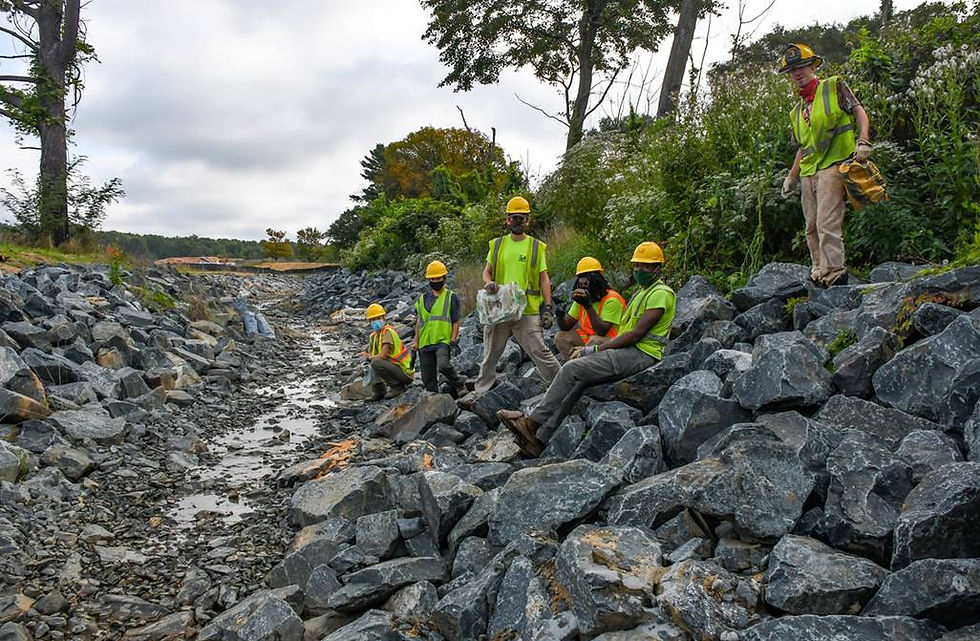A perennial headwater stream located within the Paddock Pointe project was recently reinforced with rip-rap under regulatory permit authorization. Upon completion, over half of the stream flow was traveling subterranean, under the rip rap, rather than being daylighted and on-top of the stream floor. From a regulatory stand point it is important that the stream flow on the surface and be available to wildlife. Note the following “before” photo where you can see surface flow at the outfall and portions near the end of the rip-rap where the stream enters into the forested natural stream, which flows to the Patuxent River.
To have the stream function properly, it was necessary to fill the voided interstitial spacing between the rock with chinking material, which includes sand and a mixture of various sized, smaller aggregate stone. Under permit, and working in the dry with a pump-around, SEH Excavation incorporated chinking material and washed the gravel mixture into the floor and sides of the stream to bring the stream to the surface in the upper third of the project site. During the week of September 21, 2020 SEH Excavation continued to make improvements to bring base flow to the surface.

Howard EcoWorks was retained by the land developer to perform specialty hand labor to ensure that the entire reach of rip-rapped stream had base flow running on the surface of the stream. Under direction by ESA, Howard EcoWorks performed the necessary work on Monday, September28, 2020. You can see by the following post-construction aerial photo, that all of the base stream flow is running on the surface as intended. So what did this project involve?

We all walked through the dry portions of stream bed and were able to document where we could see and hear the stream flow under the rip rap rock, primarily on the left and right bank, toe-of-slope. We flagged areas to receive packing treatments to redirect the subterranean flow onto the surface and into the center thalweg of the stream channel. To do this, we used 40 bags of sand, 20 bags of bentonite (pelletized clay, much like cat litter), and 20 bags of concrete.

The results were nearly immediate. We strategically poured bentonite into voided rip rap, which swelled and redirected flow into the channel. The bentonite plugs acted as dams and were reinforced with concrete and sand, in order to permanentize the damming and redirection function.

Within a half-day of highly focused work, we were able to bring the entire reach of stream to having surface, base flow conditions.

The crew found a box turtle trapped and pinned between rip rap rock, and was rescued and relocated to the Patuxent, forested floodplain. Ask the crew how they were able to tell that the turtle in question was male, rather than female, based on shell structure.

Everyone appreciated the near immediacy of seeing their treatments function to daylight the stream flow.

The downstream end of the project receiving selective plugging with bentonite, concrete and sand to redirect subterranean flow out of the slope bench and into the channel.
The toe of the rail road track support slope is the property boundary between Howard and Anne Arundel County. The four persons walking in-channel and on the right bank are in Howard County, and the two persons working on the left bank and the train above are in Anne Arundel County.

Note that all of the channel is flowing as the EcoWorks crew near completion. A few rain events through the stream will act to tighten and consolidate the plugging and reinforce success.

Thank you to EcoWorks (Lori and Don and field crew). Thank you to SEH Excavation (Chris and Jereme) for background support and supply deliveries. Thank you to the Stronach Group, our mutual client (Mark Thompson, white shirt in photo).


Comments